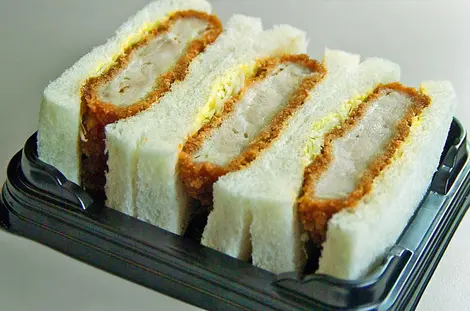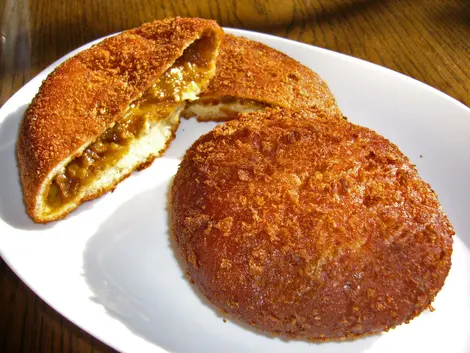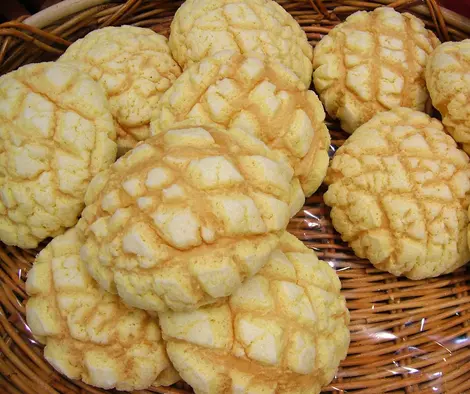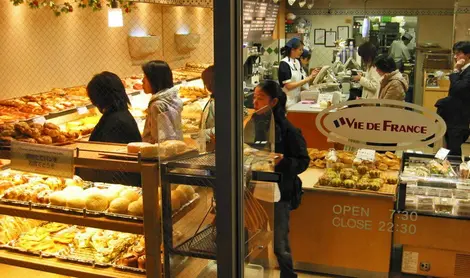Japanese bakeries 日本のパン屋
Get Bready
Need a snack? Try a Japanese bakery! They are quite different from those found in the west. Surprisingly original, you'll soon get addicted to the quality and variety of Japanese bread.
Pan (パン), or bread, in Japan is not at all part of the cultural heritage, yet these days there are many bakeries in Japan. Bread was first brought to the archipelago by Portuguese missionaries in the seventeenth century, and was quickly embraced by the Japanese people.
200 years later, in the Meiji era, there was a wave of westernization, and bakers began to make bread for the foreigners who had settled in Japan. In 1874, the bakery Kimuraya invented the anpan, a round, sweet bread bun stuffed with red bean paste.
This cultural mix of wagashi (traditional Japanese confectionery) and western-style bread was a great success in Tokyo. After World War II bread consumption grew, throughout Japan in particular, because of food shortages. The Japanese made their bread with wheat flour supplied by the Americans.
History of bread
Today there are more than 10,000 bakeries in Japan! However, the Japanese produce and eat bread in a different way to us in the West. Not everyone eats bread every day, because their staple carbohydrate is, of course, rice. There's also the problem of keeping bread fresh, difficult because of the humid climate. There are some families that eat bread at breakfast time, particularly shokupan - a very popular bread in Japan: thickly sliced white bread made with milk, which makes it very soft and slightly sweet. It's a delicious treat that will almost make you forget the bread you find in supermarkets at home. This kind of Western-influenced Japanese food is addictive, too!
For all tastes
Generally Japanese bakeries opens their doors at around ten o'clock, much later than at traditional bakeries, because the Japanese tend to buy bread for lunch, or afternoon tea rather than for breakfast. But some bakeries open from seven in the morning, especially ones near train stations, and offer a full breakfast menu. If you aren't a fan of the traditional Japanese breakfast why not visit one during your trip as a fun and tasty start to the day?
These bakeries have many original recipes, created in Japan for Japanese tastes. Here are some original kinds of Japanese bread you might see:
- The famous anpan (あんぱん), found in every bakery today. Kimuraya bakery, the anpan pioneer, still exists in Ginza with its own original recipe.
- Melonpan (メロンパン) is a soft, sweet bun covered with a crisp cookie crust. It looks a bit like a melon, hence the name, although sometimes they are actually melon-flavored too.
- Karepan (カレーパン) is a deep-fried bread coated in breadcrumbs and filled with Japanese curry. Best eaten warm and fresh!
- Kurimupan (クリームパン) is a popular sweet bread bun with vanilla custard cream inside.
To tempt children, there are also buns sold in the shape of animals or cartoon characters. Sandwiches are often sold too, made using bread from the bakery. Of course, you can also find French-influenced pastries and cakes, but prices can be quite high since dairy products (including butter and cream) are expensive in Japan.
On the practical side, most Japanese bakeries have adopted a self-service system. Take a tray and some tongs, and take as much bread as you want from the displays before paying at the counter. For a quick meal on the go, a few buns will be plenty to fill you up.






















